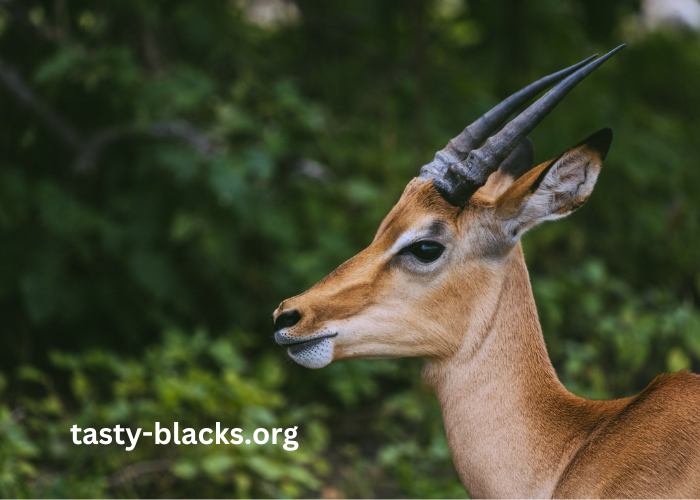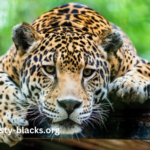The animal:4k_yrpfxipg= Impala is one of the most iconic and graceful antelopes found in Africa. Renowned for its remarkable agility and striking appearance, the impala plays a vital role in the ecosystems it inhabits. These antelopes are not only essential to the biodiversity of their environments but also serve as a crucial prey species for various predators. In this article, we will delve into the many facets of the impala, exploring its behavior, habitat, adaptations, and conservation status.
What Is the Habitat of the Impala?
The animal:4k_yrpfxipg= Impala primarily inhabits the savannas, grasslands, and woodlands of eastern and southern Africa. These habitats provide the essential resources that impalas need, including grass, leaves, and water sources. They tend to favor areas with dense vegetation nearby to provide cover from predators. Impalas are highly adaptable and can thrive in a variety of environments, from open plains to bushy areas.
The seasonal changes in these habitats also play a significant role in the lives of impalas. During the wet season, they migrate to areas with abundant grass, while in the dry season, they often move closer to water sources. This adaptability not only supports their feeding habits but also influences their social structures and breeding behaviors. Understanding the habitat requirements of the animal:4k_yrpfxipg= Impala is crucial for effective conservation efforts aimed at protecting their populations.
What Are the Physical Characteristics of Impalas?
The animal:4k_yrpfxipg= Impala is known for its sleek, muscular body and striking coloration. Males typically stand about 90 to 100 cm tall at the shoulder and weigh between 50 to 90 kg, while females are slightly smaller. Both sexes have long, slender legs adapted for swift movement, making them exceptionally agile and capable of leaping distances of up to 10 meters.
One of the defining features of male impalas is their long, curved horns, which can reach lengths of up to 90 cm. These horns not only serve as a means of defense against predators but also play a crucial role in dominance displays during mating season. Female impalas, on the other hand, do not have horns but are equally elegant, with a reddish-brown coat adorned with white underparts and distinctive markings on their faces and tails.
The impressive physical attributes of the animal:4k_yrpfxipg= Impala contribute to its survival in the wild. Their speed and agility allow them to escape predators, while their coloration helps them blend into their surroundings, providing camouflage from potential threats.
What Do Impalas Eat?
The diet of the animal:4k_yrpfxipg= Impala primarily consists of grasses, leaves, and shoots. They are considered mixed feeders, which means they consume both grasses and browse, adapting their diet based on seasonal availability. During the wet season, they prefer tender green grasses, while in the dry season, they may rely more on the leaves of shrubs and trees.
Impala herds often graze together, allowing them to detect predators more effectively. Their sharp eyesight and keen sense of smell enable them to notice potential threats from a distance. In addition, impalas engage in a behavior known as “mobbing,” where they collectively chase away predators, demonstrating their social cooperation.
The dietary habits of the animal:4k_yrpfxipg= Impala reflect their adaptability and resilience in varying environments. This flexibility allows them to thrive in diverse habitats, making them a successful species across the African continent.
How Do Impalas Reproduce?
Reproduction in animal:4k_yrpfxipg= Impala typically occurs during a defined mating season, which varies depending on environmental conditions. Males establish territories and engage in displays of strength and dominance to attract females. These displays often involve impressive leaps and vocalizations to demonstrate fitness and genetic quality.
After a gestation period of about six to seven months, females give birth to a single calf, although twins can occasionally occur. The mother will hide her calf in tall grass for the first few weeks to protect it from predators. During this time, she returns frequently to nurse and check on the calf. As the calf grows, it begins to join the herd, learning essential survival skills from its mother and other members of the group.
The social structure of impala herds is notable, as they often consist of a mix of females and their young, along with a few dominant males. This social organization enhances the survival of the young, as they benefit from the protection of the group against predators.
What Are the Social Behaviors of Impalas?
The animal:4k_yrpfxipg= Impala is a highly social species that typically forms large herds. These herds can range from a few dozen to over a hundred individuals, depending on the availability of resources and environmental conditions. Within these herds, impalas exhibit complex social behaviors, including grooming, play, and vocal communication.
Hierarchy plays a significant role in impala social dynamics. Males establish dominance hierarchies through displays of strength and aggressive behavior, particularly during the breeding season. Dominant males have priority access to mates, while subordinate males often engage in alternative strategies, such as sneaking copulations with females.
Female impalas also display social bonds, often forming matrilineal groups with their offspring. These groups provide social support and protection, particularly for vulnerable young calves. The cooperative behaviors exhibited within impala herds enhance the overall survival of the group and reflect the importance of social interactions in their lives.
What Are the Predators of Impalas?
The animal:4k_yrpfxipg= Impala faces various natural predators in its habitat, including lions, leopards, cheetahs, and hyenas. These predators often rely on stealth and speed to catch impalas, making the antelope’s agility and keen senses critical for survival. Impalas are known for their impressive escape tactics, including quick, zigzagging movements that can confuse pursuing predators.
During the dry season, when food is scarce, predation pressure can increase, leading impalas to adopt more cautious behaviors. They often graze in open areas with a clear line of sight to spot potential threats, and their social structure helps enhance vigilance against predators. The presence of multiple eyes in a herd allows impalas to detect danger more quickly, increasing their chances of survival.
The relationship between the animal:4k_yrpfxipg= Impala and its predators is a classic example of the predator-prey dynamic in nature. This interaction not only shapes the behavior and adaptations of impalas but also contributes to the overall balance of the ecosystem.
What Is the Conservation Status of Impalas?
The conservation status of the animal:4k_yrpfxipg= Impala is generally considered to be of least concern, according to the International Union for Conservation of Nature (IUCN). However, like many species, impalas face threats from habitat loss, poaching, and competition with livestock. As human populations expand and encroach on natural habitats, the availability of resources for impalas becomes increasingly limited.
Conservation efforts aimed at protecting impala populations often focus on habitat preservation and management. Establishing protected areas and wildlife reserves allows impalas to thrive without the pressures of habitat degradation. Additionally, community-based conservation initiatives that involve local communities in wildlife management have shown promise in balancing the needs of wildlife with human development.
In some regions, ecotourism plays a vital role in the conservation of the animal:4k_yrpfxipg= Impala. By promoting sustainable tourism practices, local economies can benefit from preserving wildlife habitats, creating a win-win scenario for both people and wildlife.
Conclusion
The animal:4k_yrpfxipg= Impala is a remarkable species that exemplifies the beauty and complexity of the natural world. From their agility and social behaviors to their adaptability in diverse habitats, impalas play a vital role in their ecosystems and contribute to the rich biodiversity of Africa. As we continue to learn about these magnificent animals, it becomes increasingly important to engage in conservation efforts that protect their populations and habitats.
Understanding the challenges faced by impalas and the dynamics of their ecosystems can guide effective conservation strategies. By fostering a greater appreciation for the animal:4k_yrpfxipg= Impala, we can inspire action to ensure that future generations will have the opportunity to experience the grace and vitality of these iconic antelopes in the wild.










